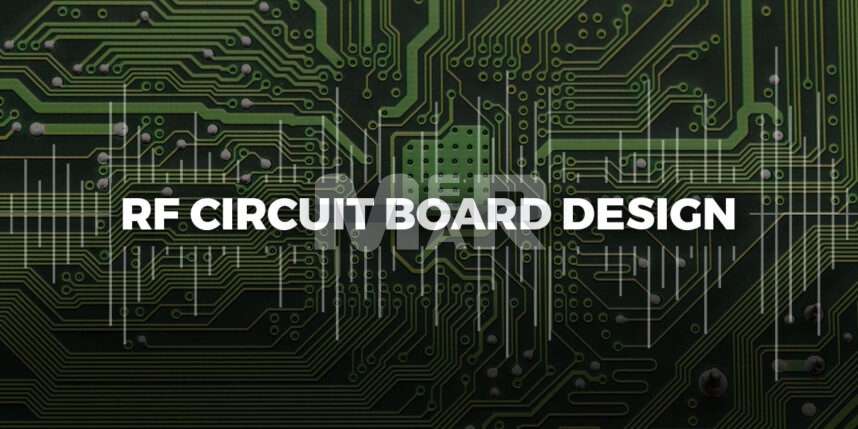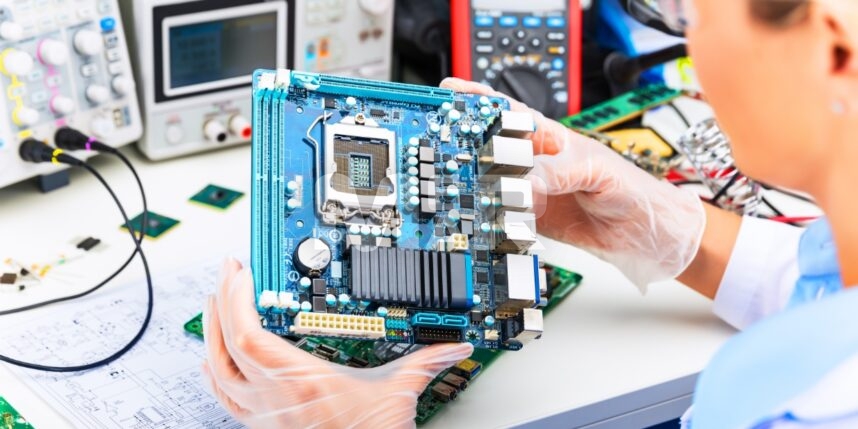RF Circuit Board Design – Top Challenges, Solution and Tips for Smooth Process!

RF circuit board design is seeing increased usage whether it is in medical, industrial or communication devices. Simply put, RF signals are high-frequency analog signals. The RF frequency range is usually from 300 kHz to 300 GHz. This is as opposed to Microwave frequency range, which is anything above 300 MHz
Even though RF PCBs have a wide range of advantages, compared to high-speed digital-signal board design, RF circuit board design also comes with its unique set of challenges. Let us look at RF circuit board design challenges in some detail as also look at effective tips that help designers mitigate these challenges effectively.
Challenges Associated with RF Circuit Board Design
1. Sensitivity to Noise
RF signals are highly sensitive to noise and lead to ringing and reflections. What is important is to ensure that the signal is properly terminated. It is also advisable to optimize the return path and ensure proper grounding is maintained.
2. Impedance Matching
Essentially frequency and tolerance are inversely related the higher the frequency, the smaller is the tolerance. If the total length of the traces is greater than the critical length i.e 1/16th of the wavelength of the signal, impedance control needs to be undertaken.
3. Return Loss
It is imperative that return loss be minimized. In the absence of a good design, the return signal will go through power planes, or through multiple layers of the PCB. In such cases it will not be impedance controlled. For this reason, it is important that there are ground planes underneath the signals that can provide an impedance-controlled path. With ground planes, ground loop currents are minimized and also RF leakage into circuit elements is minimized.
4. Crosstalk
High Frequency designs also suffer from crosstalk. Crosstalk, in fact, is directly proportional to edge rates of the active line. Here the coupled energy from the active line is superimposed on the victim line. With board densities rising, so does the issue of crosstalk. To counter this, it is important that adequate space is left around the signal trace. Also, it is important that traces are kept as small as possible. Also, it is important that high-speed signals are routed far apart. Reducing the dielectric spacing between the line and its reference plane is yet another effective measure. Similarly, terminating the line on its characteristic impedance also limits crosstalk.
5. Other Signal Losses
Other signal losses include skin effect loss as also dielectric loss. PCB designers therefore need to look at laminate properties such as:
- Dissipation Factor
- Dielectric Constant Value
FR4 material for PCBs or laminate, for example, has a high dissipation factor. Insertion losses are therefore higher when using FR4. Also, the dielectric constant value of FR4 can vary up to 10 percent. In turn, this impacts impedance. High frequency laminates have more stable frequencies.
Coming to the Dk value itself, in microwave circuits the Dk value is linked to the size of circuit elements. It is therefore possible for a designer to reduce the circuit size by choosing a laminate that has a higher Dk value.
Effective Tips for RF Circuit Board Design
There are a number of effective tips that help in creating better designs and improving anti-interference. Some of these include:
- Usage of inner layers as power ground layers. By doing this you will provide shielding and reduce spurious inductance. Reducing the length of the signal wire reduces cross-interference.
- Turning the circuit layout 45 degrees. By doing this, high-frequency signal emission and coupling will be reduced. Short layout lengths work better for through holes. Also, the layout between layers should be vertical in order to reduce signal interference. It is also beneficial to increase copper on the ground layer.
- Packaging important signal traces. This goes a long way in increasing the anti-interference ability of the signal. When it comes to signal traces it is also recommended to avoid loops and use a chrysanthemum link instead.
- Bridging the decoupling capacitor. It is important to lay out the RF first and make the RF signal 50 ohms.
- The importance of isolation cannot be overstated.
Incorporating these seemingly small suggestions can go a long way in creating far more effective designs and improving overall efficiency.
Mer-Mar Electronics is a certified and leading PCB manufacturer that gets things done in lesser turnaround time. We are committed to accurately reflecting your PCB design specifications as well as meeting the industry standards. We, at Mer-Mar Electronics, assist our customers from initial design to mass production & delivery; as one of the leading electronics manufacturing services (EMS) providers. To know more contact us at sales@mermarinc.com or call us on (760) 244-6149.








